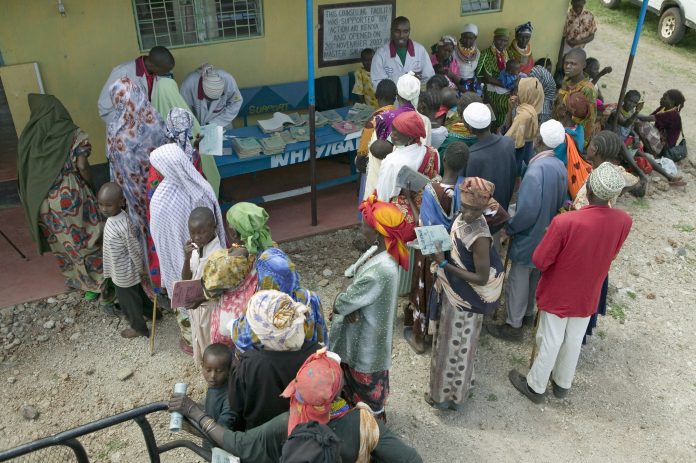Cecilia Van Cauwenberghe from Frost & Sullivan’s TechVision Group, gives a call to action when it comes to assessment and surveillance to mitigate the impact of infectious diseases in Africa
The onset of infectious diseases is largely associated with social conditions, economic circumstances, environmental factors and ecologic dynamics. Infectious diseases constitute a high burden on public health and a considerable impact on local and global economies. Their origin is generally connected to an important risk of wildlife zoonotic and vector-borne emerging conditions. This fact is particularly influencing at lower-latitude developing countries, such as tropical Africa, where according to Jones et al., near 60% of emerging infectious diseases are zoonoses, of which 72% are from wildlife (Jones et al., 2008).
Overview of influencing factors
The impact of rapid urbanisation
Boyce et al. carried out a systematic literature review of the available online databases to assess the risk factors for infectious diseases in the urban environments of sub-Saharan Africa (Boyce et al., 2019). The study unveiled that publications about cases of Malaria and HIV are the most frequent. The authors correlated the impact of increasing and disorganised urbanisation with new challenges for the management of infectious diseases in this region. A key concern relies on how to provide new or supplementary control measures by using a model that was originally developed for expanding health services to rural settlements. The scaling up of this model to meet larger population demands in urban environments present serious difficulties. Furthermore, rapid urbanisation comes with overcrowded communities lacking basic services and facilities, especially access to safe water, which constitute a higher risk of acquiring certain communicable diseases, typically malaria; neglected tropical diseases; helminth infections; sexually transmitted infections such as HIV; respiratory diseases including tuberculosis, measles, and pneumonia; viral hemorrhagic fever (VHF) such as Ebola, Lassa fever, and flaviviruses; etc.
The social determinants of health
Houéto presented an article about the social determinants of emerging infectious diseases in Africa (Houéto, 2019). Following the guidelines of the Commission of Social Determinants of Health (CSDH) of the Worldwide Health Organization (WHO), the study is organised into three principal categories: 1) behavioural practices; 2) physical and social environments; 3) factors related to the health system. According to the author, as a broad recommendation improving daily living conditions receives the major emphasis, especially on early child development and education. Regarding the next steps, living and working conditions would be associated with the creation of social protection policies to achieve goals by involving civil society, governments and global institutions. Another pinpoint is related to the inequitable distribution of power, money, and resources.
Assessment, control and surveillance
Emerging and re-emerging infectious diseases
In a recent report, a comprehensive number of emerging and re-emerging bacterial and viral diseases, exhibiting their implications for Africa and the targets for prevention in each case, were systematically depicted (Fenollar and Mediannikov, 2018). The article also maps the countries in the continent exhibiting higher risk for certain maladies and the vaccination (when available) recommendations. The authors emphasise that Africa is highlighted as distinctive in comparison with the rest of the world, and even with other parts of the developing world, in terms of the emergence and re-emergence of infectious diseases in a pluri-endemic context.
Sociocultural dimension and public health
Overall, there is increasing interest in targeting infectious disease studies focused on assessment and surveillance in Africa. These studies have served to identify new infectious agents, helping to demonstrate the importance of being concerned not only about bacterial and viral infectious diseases but also protozoal and helminthic infectious diseases. New genetic variants of many of these vectors have also been identified.
The sociocultural dimension of emerging infectious diseases in Africa have been recently exhibited by Tangwa et al. in a report, in which Africa is characterised as the holder of the greatest infectious disease burden in the world, as well as having the weakest public health infrastructure. The authors highlight the need for identifying priority diseases at the sight of potential efforts to establish effective public health infrastructures, which may take decades (Tangwa et al., 2019). However, the strategic combination of adequate and systematic surveillance with epidemic preparedness and response activities according to the aforementioned priorities for specific diseases may substantially help to address this concern. The new challenge at this point would be overcoming the current limitations in infrastructure and support for surveillance, including research and training efforts.
Final remarks
Africa is a top priority in the world regarding assessment, control and surveillance of emerging infectious diseases. A greater focus on the look for solutions to serious inequalities, especially in terms of incomes and access to safe basic services such as water, will be crucial to mitigate public health threats. With the eyes of the entire world over Africa, these social determinants must be urgently addressed to overcome basic limitations to research and education to develop more effective strategies.
Acknowledgements
I would like to thank all contributors from the industry involved with the development and delivery of this article from Frost & Sullivan.
References
- Boyce, M.R., Katz, R. and Standley, C.J., 2019. Risk Factors for Infectious Diseases in Urban Environments of Sub-Saharan Africa: A Sys- tematic Review and Critical Appraisal of Evidence. Tropical Medicine and Infectious Disease, 4(4), p.123.
- Fenollar, F. and Mediannikov, O., 2018. Emerging infectious diseases in Africa in the 21st century. New microbes and new infections, 26, pp.S10-S18.
- Houéto, D., 2019. The social determinants of emerging infectious dis- eases in Africa. MOJ Public Health, 8(2), pp.57-63.
- Jones, K.E., Patel, N.G., Levy, M.A., Storeygard, A., Balk, D., Gittleman, J.L. and Daszak, P., 2008. Global trends in emerging infectious dis- eases. Nature, 451(7181), pp.990-993.
- Tangwa, G.B., Abayomi, A., Ujewe, S.J. and Munung, N.S. eds., 2019. Socio-cultural Dimensions of Emerging Infectious Diseases in Africa: An Indigenous Response to Deadly Epidemics. Springer.
- WHO. Commission of Social Determinants of Health Final Report 2018.








